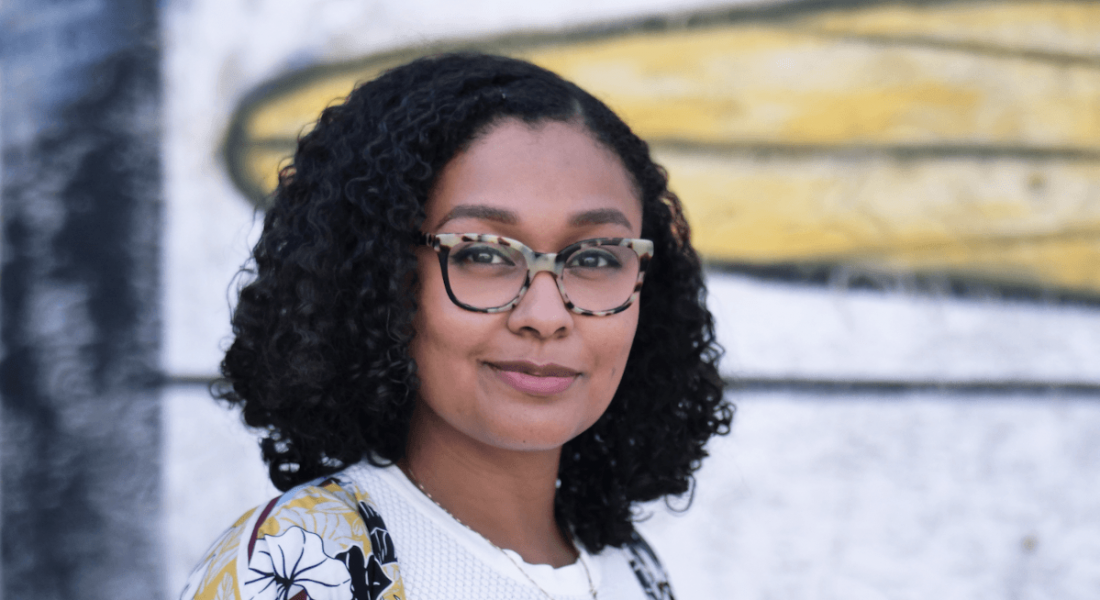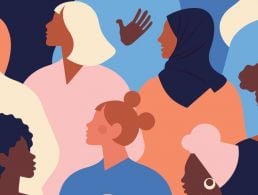Paola Mendoza-Yu is a UX designer with more than 15 years’ experience. She spoke to Siliconrepublic.com about her career and the ethics of UX design.
User experience (UX) design has become a thriving industry over the last number of years as the interaction between human users and everyday products becomes more important. UX design is now essential for virtually every product, service and technology in the world and there are many layers of ethics, accessibility and unconscious bias that need to be addressed by designers.
One such UX designer is Paola Mendoza-Yu. “I’m an Afro-Latina UX designer, mom and wife. I was born in South-Central Los Angeles, California to a wonderful, single, undocumented-immigrant mother,” she told Siliconrepublic.com.
“I describe her that way proudly because she was who I strive to be – a warrior, fierce protector, staunch feminist, loyal friend, beacon of honesty and humility; all wrapped up in humour, love, and affection.”
Mendoza-Yu has been designing in one way or another professionally for more than 15 years, covering various industries including digital publications, e-commerce and software-as-a-service providers. She currently works as the principal UX designer at education technology company GoGuardian.
“I’m passionate about leaving the world better than I found it and doing so thoughtfully and respectfully,” she added.
‘I’m hoping ethics can one day have a seat at the table just like research does now’
– PAOLA MENDOZA-YU
What first stirred your interest in UX design?
I ‘met’ Photoshop when I was 12. The stripped-down version, known as Photoshop Elements, came bundled with a computer my dad bought me for Christmas one year. I became obsessed with what I would later find out was called graphic design. [In] my junior year of high school, I found out I could do it for a living and that was that. I became a graphic designer.
It’s interesting to work in this era of design where it garners the respect that it does. When I first started designing, production-level work was all that was expected of you. If you were a designer, it meant you took care of all creative work. That didn’t change for a long time and eventually, as the internet became what it has, my responsibilities expanded.
I had to make a lot of intentional pivots along the way to get here. Until one day, I was just doing UX. The name of my profession has changed a lot over time: graphic design, graphic design for the web, web design, UI design and eventually UX. I’m sure it’ll keep changing as we keep defining what it is we truly do. But I feel like this is what I have always done and so I consider myself lucky to have found my calling at such a young age.
How has the UX design sector changed in the years that you’ve been in it?
In my opinion, the biggest shift has been the rise in respect for research – the general understanding that you need to speak to the people you’re building solutions for throughout your entire process.
Not that proponents of research and the data surrounding its importance haven’t always been there, it was just hard to get the decision makers to care or make room for it. I can’t tell you how many times I was told there was no time or money for research.
Second to that, I’d say having major companies, new and old, shift to becoming or being founded as design-led companies. 22-year-old me would laugh if you told her about the kinds of decisions that I, as a designer, get to make today.
What challenges have you come across throughout your career?
There’s the somewhat frivolous things that will always bother me. Being that design is a visual medium, the subjective feedback of people who dismiss a design as ‘bad’ because it doesn’t appeal to their personal taste or style. Over time, it’s gotten easier to decipher whether someone is struggling to articulate their concerns or they just don’t like a particular colour or typeface.
Then there’s the bigger things, like being unable to get promoted despite positive performance reviews over the years. Being asked to manage a team without the title or salary to reflect the added responsibilities. Having my direct supervisors take credit for my ideas and design work by excluding me from meetings because they were above my pay grade. It has taken me longer than I’d like to admit to understand my own worth and to know when I’m being taken advantage of.
What has been a career highlight for you?
Leading design on a suicide prevention tool for schools and being able to confirm the tool has helped save lives. Not sure when I’ll top that one.
You’re very passionate about the ethics of UX design and the responsibility that comes with it. Can you tell me a bit about that?
We’ve seen plenty of examples, especially in the past decade, of seemingly trivial design and product decisions having catastrophic global consequences. As data becomes the most valuable currency in today’s world, we can make decisions that affect whether that data and the people it belongs to are exploited for profit or protected. Because of this, I want more designers, and product teams at large, to understand their own roles and responsibilities to society.
I’m hoping ethics can one day have a seat at the table just like research does now. Considering how fast the world is changing, in the midst of a global pandemic and civil unrest, I’m hopeful it won’t take too long. I’d also selfishly like my kids to look back one day and be proud of their mom.
How can UX designers avoid the missteps that can often result in unintended consequences of product design?
Research! Validate everything. Your assumptions about who your users are, what they want, what problems they need solved and then of course whether your design actually solves those problems. If research isn’t a core component of your team’s UX workflow, the likelihood of taking a misstep increases exponentially.
I also believe in having discovery and ideation processes that seek out what those unintended consequences might be. Ask questions that go beyond the obvious, like how might someone abuse the product or feature you’re trying to build? Whose job becomes obsolete? What marginalised group might be put in harm’s way? Who is being excluded from accessing the experience?
These aren’t always easy questions to answer and I’ve struggled with getting stakeholders to care about concerns I couldn’t fully validate in the past. In which case, I armed myself with back-up plans. What do we do if something goes wrong? If you stay prepared, then you won’t have to waste time getting prepared. However, if you can answer these questions, design with those answers in mind.
The point is to keep asking, learning, and asking again. Always seek to find clarity and make decisions accordingly.
Want stories like this and more direct to your inbox? Sign up for Tech Trends, Silicon Republic’s weekly digest of need-to-know tech news.




